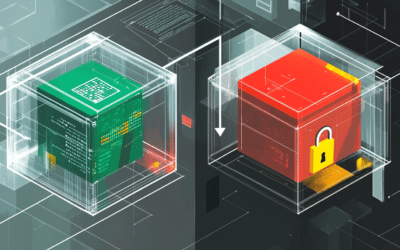
Controlling the Costs of Test Environments
FEB, 2023
by Andrew Walker.
Author Andrew Walker
Andrew Walker is a software architect with 10+ years of experience. Andrew is passionate about his craft, and he loves using his skills to design enterprise solutions for Enov8, in the areas of IT Environments, Release & Data Management.
Testing is a crucial aspect of software development, and it requires a suitable test environment to simulate production conditions. However, setting up and maintaining a test environment can be costly and time-consuming, especially when multiple teams and projects are involved.
Enov8 IT & Test Environment Manager
*Innovate with Enov8
Streamlining delivery through effective transparency & control of your IT & Test Environments.
In this post, we’ll discuss 5 methods you can use to control test environment costs without compromising the quality of your testing.
1 Consolidate Test Environments
Many organizations maintain multiple test environments for various projects and teams. However, this inefficient approach can lead to excessive infrastructure and licensing costs. To control costs, consider consolidating your test environments to eliminate redundancy and optimize resource usage. By consolidating your test environments, you can reduce licensing costs, hardware costs, and maintenance costs.
Examples of how this might be achieved:
- Merge similar environments: If your organization has multiple test environments that serve similar purposes, consider merging them into a single environment. For example, if you have separate environments for integration testing and system testing, you could merge them into one environment that can handle both types of testing.
- Use virtualization: Virtualization can help you consolidate your test environments by allowing you to run multiple virtual machines on a single physical server. This can help you optimize resource usage and reduce hardware costs.
- Implement containerization: Containerization is a lightweight alternative to virtualization that allows you to run multiple containers on a single physical server. This approach can help you reduce infrastructure costs and improve resource utilization.
- Share environments: If multiple teams are working on similar projects, consider sharing a test environment between them. This can help you reduce licensing and infrastructure costs, while also improving collaboration between teams.
2 Use Cloud-Based Test Environments
Cloud-based test environments offer several advantages over on-premises solutions. With cloud-based test environments, you can easily scale up or down based on your needs, reducing the need for costly hardware investments. Additionally, cloud-based environments can be quickly provisioned and de-provisioned, allowing you to save money on infrastructure costs.
Here are some examples of using cloud-based test environments:
- Use cloud-based testing services: There are several cloud-based testing services available that offer pre-configured test environments. These services can be a cost-effective alternative to building and maintaining your own test environments. Examples of cloud-based testing services include AWS Device Farm, Sauce Labs, and BrowserStack.
- Deploy test environments in the cloud: You can deploy your own test environments in the cloud using services like Amazon Web Services (AWS) or Microsoft Azure. This approach allows you to scale up or down based on your needs and only pay for the resources you use.
- Leverage cloud-based load testing: Load testing can be resource-intensive and requires a lot of infrastructure. By leveraging cloud-based load testing services like BlazeMeter or LoadStorm, you can simulate large-scale traffic and stress test your application without the need for expensive infrastructure.
3 Implement Environment Monitoring and Governance
Without proper monitoring and governance, test environments can quickly become cluttered, leading to wasted resources and increased costs. Implementing environment monitoring and governance can help you control costs by providing visibility into resource utilization and identifying unused or underutilized resources.
Some examples of implementing environment monitoring and governance include:
- Use component level monitoring tools: Monitoring tools like New Relic, AppDynamics, or Datadog can help you monitor your test environment’s performance and resource utilization. These tools can provide real-time visibility into your environment’s health and performance, allowing you to identify and address issues before they become critical.
- Implement automated provisioning and de-provisioning: Automated provisioning and de-provisioning can help you control costs by ensuring that resources are only allocated when they are needed. This approach involves automating the process of creating and tearing down test environments based on predefined triggers, such as the start and end of a test cycle.
- Set up usage quotas: By setting up usage quotas, you can ensure that teams are only using the resources they need. Usage quotas can be set based on factors like the number of users, the amount of data storage, or the number of virtual machines.
- Conduct regular environment audits: Regular environment audits can help you identify unused or underutilized resources and eliminate clutter. These audits can be conducted manually or using automated tools and should be done on a regular basis.
- Implement access controls: Access controls can help you ensure that only authorized users have access to your test environment. This can help you avoid unauthorized usage of resources and reduce the risk of data breaches. Access controls can be implemented using tools like Active Directory or LDAP.
4 Scale Down Test Environments
Scaling down test environments involves reducing the number of servers, databases, and other resources used for testing. By scaling down your test environment, you can reduce infrastructure and licensing costs while still maintaining adequate testing coverage. To scale down your test environment, consider the following:
- Use virtualization technologies to consolidate servers and reduce hardware costs.
- Archive and delete unused test data and resources to free up storage space.
- Identify and eliminate redundant or unnecessary test cases.
5 Automate Test Environment Efforts
Manual test environment management operations can incur significant costs, especially in terms of missed opportunities due to critical resources being tied up in manual setup and tear-down activities. The first step towards justifying automation initiatives and investing in cloud-based test environment infrastructure is to measure the effort required in test environment management. By tracking metrics such as setup time, maintenance, and downtime, you can gain insights into the amount of effort being expended on manual management. With this information, you can make a stronger case for automation and cloud-based infrastructure, which can significantly reduce costs and improve efficiency.
Automating your test environment efforts is an effective way to save costs and streamline your software development process. Start by measuring the effort required to manage your test environments using metrics like setup time, downtime, and maintenance.
Next, identify areas that can be automated, such as environment provisioning, monitoring, and data management. Tools like Enov8 Environment Manager or scripts, configuration management tools, and infrastructure-as-code can be used to implement the automation.
Finally, continuously monitor and optimize the automated processes to ensure they are working efficiently and to further reduce costs.
Warning! Do Nothing & Pay the Penalty
Organizations that neglect to use Enov8 to manage their test environments often end up paying more than necessary. They experience a lack of transparency that encourages teams to hoard test infrastructure, and they create the possibility of a “dark budget” where departments can drive entire projects without being accountable.
If you want to reduce your overall test environment management costs, the first step should be to audit your test environments and identify those that are not in use. You may be surprised to find that your organization is holding onto test environments used to qualify long-retired software systems. Alternatively, you may find testing environments that have been repurposed by teams for uses far outside the scope of software testing.
In summary, one of the most effective ways to control test environment costs is to identify wasteful environments and reclaim them using Enov8 Environment Manager.
Enov8 Environment Manager, Proliferation Dashboad: Screenshot
Conclusion
Controlling costs and scaling down test environments requires a strategic approach that balances the needs of your testing teams with your budgetary constraints. By consolidating your test environments, using cloud-based solutions, implementing monitoring and governance, and scaling down your test environment, and automating, you can optimize resource usage, reduce costs, and ensure the quality of your testing.
Other TEM Reading
Interested in reading more about Test Environment Management. Why not start here:
Enov8 Blog: Understanding the Types of Test Environments
Enov8 Blog: Enterprise IT Environment : What it is and how to define yours?
Enov8 Blog: IT Environments : What they are and which do you need?
Enov8 Tool: The Enov8 ROI Calculator
Relevant Articles
RAG Status: What It Is and Using It for Project Management
Effective Leadership requires effective tooling to drive successful outcomes. One tool they can use to monitor and measure progress is RAG status. RAG stands for Red, Amber, Green, and is a simple traffic light system used to communicate the current status of a...
Enterprise Architecture Tools: 11 to Be Aware Of in 2025
Enterprise architecture (EA) is an essential discipline for organizations aiming to align their IT strategy with business goals. As companies become more complex and technology-driven, having the right set of EA tools is crucial to streamline operations, improve...
What is a Staging Server? An Essential Guide
Release issues happen. Maybe it’s a new regression you didn’t catch in QA. Sometimes it’s a failed deploy. Or, it might even be an unexpected hardware conflict. How do you catch them in advance? One popular strategy is a staging server....
What is Deployment Planning? A Detailed Guide
Deployment planning, sometimes referred to as "implementation planning," is the process of creating a plan for the successful deployment of a new software or system. It involves identifying the resources, tasks, and timeline needed to ensure that the deployment is...
The Definitive Guide to Test Data Generation
Test data generation is a critical part of the software testing lifecycle, ensuring that applications are tested against realistic scenarios before going live. If you’re not testing against production-like data, you’re arguably not truly testing your application. In...
What is a Test Data Manager? A Detailed Introduction
Testing is a critical aspect of software development, and it requires the use of appropriate test data to ensure that the software performs optimally. Test data management (TDM) is the process of creating, storing, and managing test data to ensure its...












